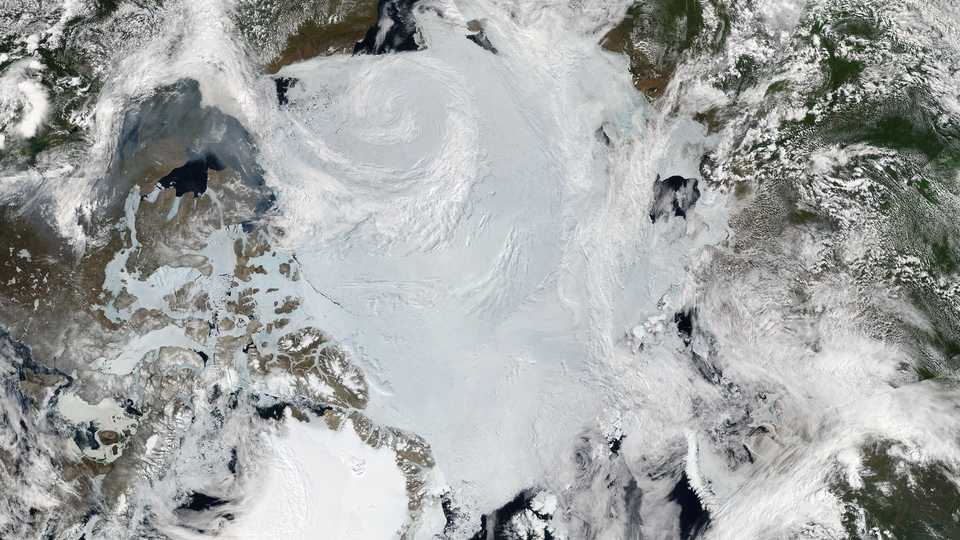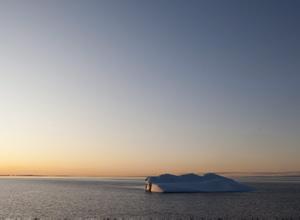Science News
The Arctic Report Card

Obama’s announcement today of protecting portions of the Arctic brings great news, especially after the National Oceanic and Atmospheric Administration’s recently released Arctic Report Card, which paints a bleak picture of changes occurring in the Arctic.
At a press conference that took place during the American Geophysical Union (AGU) meeting last week, scientists summarized the report card which has been released every year for the past 11 years: the result of dedicated research by more than 61 scientists from 11 countries.
The results were not promising.
Donald Perovich, an adjunct professor of engineering at Dartmouth College, authored the report’s essay on the loss of Arctic sea ice. He noted that air temperatures in the Arctic have risen twice as fast as global air temperatures—3.5°C (6.3°F) over the course of a century. This is causing ice to form more slowly and melt more quickly—a troubling combination.
“Warm air and ocean temperatures in the fall led to a record-breaking delay of fall freeze-up in the Arctic sea ice,” said Perovich. “From mid-October to the present, the ice has been the lowest observed since the beginning of the satellite record—again, a record that began in 1979.”
Greenland’s ice sheet has also seen alarming rates of melting. “The [spring] melt onset was the second earliest in the 37-year record from satellites, close to the record in 2012, but varied by a few days,” said Marco Tedesco, a research professor at Lamont-Doherty Earth Observatory. Along the northeast coast of Greenland, the melting season lasted 30 to 40 days longer than usual, and roughly 15 to 20 days longer than usual on the west coast compared to averages taken between 1981 and 2010.
According to Jeremy Mathis, director of NOAA’s Arctic Research Program, one of the most startling effects of a warming world has been increased levels of ocean acidification in Arctic waters. As cold ocean waters absorb high amounts of carbon dioxide from the atmosphere (more so than warm ocean waters), the ocean becomes slightly more acidic. This acidic environment makes it harder for marine creatures who build their shells out of calcium carbonate to get the chemical elements they need from the ocean.
The loss of a few clams within an ecosystem might seem like a benign consequence, but these losses can have a rippling effect on the food chain. Scientists are discovering that—from clams, to walruses, to polar bears, to the Arctic communities that depend on these waters—the effects of ocean acidification are felt deeply in the Arctic.
As Mathis sees it, there are two distinct challenges that acidifying Arctic oceans are facing.
“The first one is [that] the Arctic has been traditionally covered by sea ice and so that acts like a barrier between the atmosphere and the ocean to prevent the exchange of carbon dioxide. […] But now, we’re peeling the ice back,” said Mathis. “It’s like peeling saran wrap off of a bowl, and so there’s this rapid equilibration now between the higher [carbon dioxide] levels in the atmosphere and the lower [carbon dioxide] levels in the ocean.” In other words, the balance is being thrown off as the carbon dioxide from the air is being absorbed by the oceans, making for more acidic seas.
The second issue that’s speeding up the process of ocean acidification in the Arctic seems to be an increase in the growth of microscopic marine plants, called phytoplankton. These small, photosynthetic organisms can pack a big punch by pumping even more carbon into already acidifying oceans. The combination of these two things is causing ocean acidification in the Arctic to happen at a faster rate than any other part of the ocean.
Unfortunately, the effects of a warming arctic aren’t limited to areas above the 81st parallel. As Mathis put it, “What happens in the Arctic, doesn’t stay in the Arctic.”
When asked what letter grade the Arctic Report Card would earn, Perovich spoke up, “D+.”
“Because I’m an easy grader.”
Image: NASA Earth Observatory


